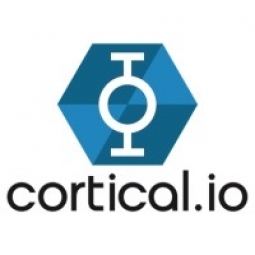公司规模
Large Corporate
地区
- America
国家
- United States
产品
- Cortical.io SemanticPro
技术栈
- Natural Language Processing
实施规模
- Enterprise-wide Deployment
影响指标
- Productivity Improvements
- Cost Savings
- Digital Expertise
技术
- 分析与建模 - 自然语言处理 (NLP)
适用行业
- 金融与保险
适用功能
- 商业运营
用例
- 欺诈识别
- 监管合规监控
服务
- 数据科学服务
关于客户
客户是美国的一家一级银行。该银行正在探索通过自动化提高效率的方法。银行的目标是找到一种合适的提取工具来帮助实现风险评估流程的自动化,并在结果质量足够可靠的情况下降低错误契约评估的运营风险。该银行的战略与新兴技术副总裁 Martha 负责确定自动化可以提高组织流程效率的领域。她不断探索新技术以跟上市场的发展,并与业务线所有者进行内部访谈以评估优化潜力。确定需要改进的领域之一是批发信贷部门,由 Rick 领导,他的团队花费大量时间彻底审查财务信息以评估信贷风险。
挑战
该银行正在寻找通过自动化提高效率的方法,特别是在信用风险评估领域。批发信贷协议的语言和结构复杂性使得自动化变得困难。这些协议非常复杂,有 100 多页的文档,而且非常定制化,因为银行使用不同的贷款系统。特别是契约使用高度具体的用例相关公式。一些提取很简单,可以“按原样”提取值(无需推理),例如:指定日期、承诺、利率、当事人。其他则更具挑战性,需要在选项或契约之间进行细粒度区分(例如赎回交易选项、终止选项)。在这里,自动化系统必须根据文档结构和提取项目的关系来理解域逻辑。与定价相关的表格包含许多不同的参数(适用保证金、利息支付计划、承诺表),并且很难自动提取定价信息。这就是为什么信贷协议的审查仍然是手动完成的,这给银行带来了大量时间和金钱,更不用说这种平凡任务的高错误率了。
解决方案
该银行利用 Cortical.io SemanticPro 基于含义的功能从信用协议中提取关键信息并自动对契约进行分类。在研究了市场上的不同解决方案后,Martha 决定测试 Cortical.io 的自然语言处理功能并将其应用于信用协议的分析。她与 Cortical.io 合作启动项目的主要原因是该系统可以轻松快速地适应 Rick 的使用案例:只需要有限数量的信用协议示例(少于 50 个)即可训练系统。这极大地限制了该项目的初始投资和总体风险。在初始基础知识阶段之后,系统以无人监督的方式从相关源材料中学习,Rick 团队的两名贷款人员通过审查一小部分文件提供了输入。此后,系统不断吸收反馈并创建更准确的模型(持续学习,又称人机循环)。
运营影响
数量效益

Case Study missing?
Start adding your own!
Register with your work email and create a new case study profile for your business.
相关案例.

Case Study
Real-time In-vehicle Monitoring
The telematic solution provides this vital premium-adjusting information. The solution also helps detect and deter vehicle or trailer theft – as soon as a theft occurs, monitoring personnel can alert the appropriate authorities, providing an exact location.“With more and more insurance companies and major fleet operators interested in monitoring driver behaviour on the grounds of road safety, efficient logistics and costs, the market for this type of device and associated e-business services is growing rapidly within Italy and the rest of Europe,” says Franco.“The insurance companies are especially interested in the pay-per-use and pay-as-you-drive applications while other organisations employ the technology for road user charging.”“One million vehicles in Italy currently carry such devices and forecasts indicate that the European market will increase tenfold by 2014.However, for our technology to work effectively, we needed a highly reliable wireless data network to carry the information between the vehicles and monitoring stations.”

Case Study
Safety First with Folksam
The competitiveness of the car insurance market is driving UBI growth as a means for insurance companies to differentiate their customer propositions as well as improving operational efficiency. An insurance model - usage-based insurance ("UBI") - offers possibilities for insurers to do more efficient market segmentation and accurate risk assessment and pricing. Insurers require an IoT solution for the purpose of data collection and performance analysis

Case Study
Smooth Transition to Energy Savings
The building was equipped with four end-of-life Trane water cooled chillers, located in the basement. Johnson Controls installed four York water cooled centrifugal chillers with unit mounted variable speed drives and a total installed cooling capacity of 6,8 MW. Each chiller has a capacity of 1,6 MW (variable to 1.9MW depending upon condenser water temperatures). Johnson Controls needed to design the equipment in such way that it would fit the dimensional constraints of the existing plant area and plant access route but also the specific performance requirements of the client. Morgan Stanley required the chiller plant to match the building load profile, turn down to match the low load requirement when needed and provide an improvement in the Energy Efficiency Ratio across the entire operating range. Other requirements were a reduction in the chiller noise level to improve the working environment in the plant room and a wide operating envelope coupled with intelligent controls to allow possible variation in both flow rate and temperature. The latter was needed to leverage increased capacity from a reduced number of machines during the different installation phases and allow future enhancement to a variable primary flow system.

Case Study
Automated Pallet Labeling Solution for SPR Packaging
SPR Packaging, an American supplier of packaging solutions, was in search of an automated pallet labeling solution that could meet their immediate and future needs. They aimed to equip their lines with automatic printer applicators, but also required a solution that could interface with their accounting software. The challenge was to find a system that could read a 2D code on pallets at the stretch wrapper, track the pallet, and flag any pallets with unread barcodes for inspection. The pallets could be single or double stacked, and the system needed to be able to differentiate between the two. SPR Packaging sought a system integrator with extensive experience in advanced printing and tracking solutions to provide a complete traceability system.

Case Study
Transforming insurance pricing while improving driver safety
The Internet of Things (IoT) is revolutionizing the car insurance industry on a scale not seen since the introduction of the car itself. For decades, premiums have been calculated using proxy-based risk assessment models and historical data. Today, a growing number of innovative companies such as Quebec-based Industrielle Alliance are moving to usage-based insurance (UBI) models, driven by the advancement of telematics technologies and smart tracking devices.
Case Study
Enhancing Security and Compliance in Remitly's Global Money Transfer Service with Fastly
Remitly, an online remittance service, was faced with the challenge of securing its proprietary global transfer network. The company needed a security solution that could meet PCI requirements and protect customers' sensitive transactions through its mobile application. The solution had to be capable of defending against new and emerging attack types without impacting performance. Remitly also had to deal with irregular traffic patterns, such as a sudden spike in account transfers from a small network segment on the Pacific coastline of South America. The company needed to determine in real time whether such traffic indicated an attack or valid requests. A traditional web application firewall (WAF) would not be able to distinguish this traffic, potentially leading to customer frustration if the IP was blacklisted.







